I was having fun with all the sewing machine stitches, but I got stuck at the ending stitch. I was stitching there with my embroidery for hours. Cause i didn’t figure out how to close a stitch on a sewing machine.
Then I thought backstitch is considered to be the strongest stitch. So why not try it? So I did,
Machine Close Stitch
To close a stitch on a sewing machine, simply press the reverse lever or button to sew a few stitches backward over the end of your seam—this locks it in place.
Guess what? It worked! 😜 Just like that, I even figured it out. how to end a stitch sewing machine.
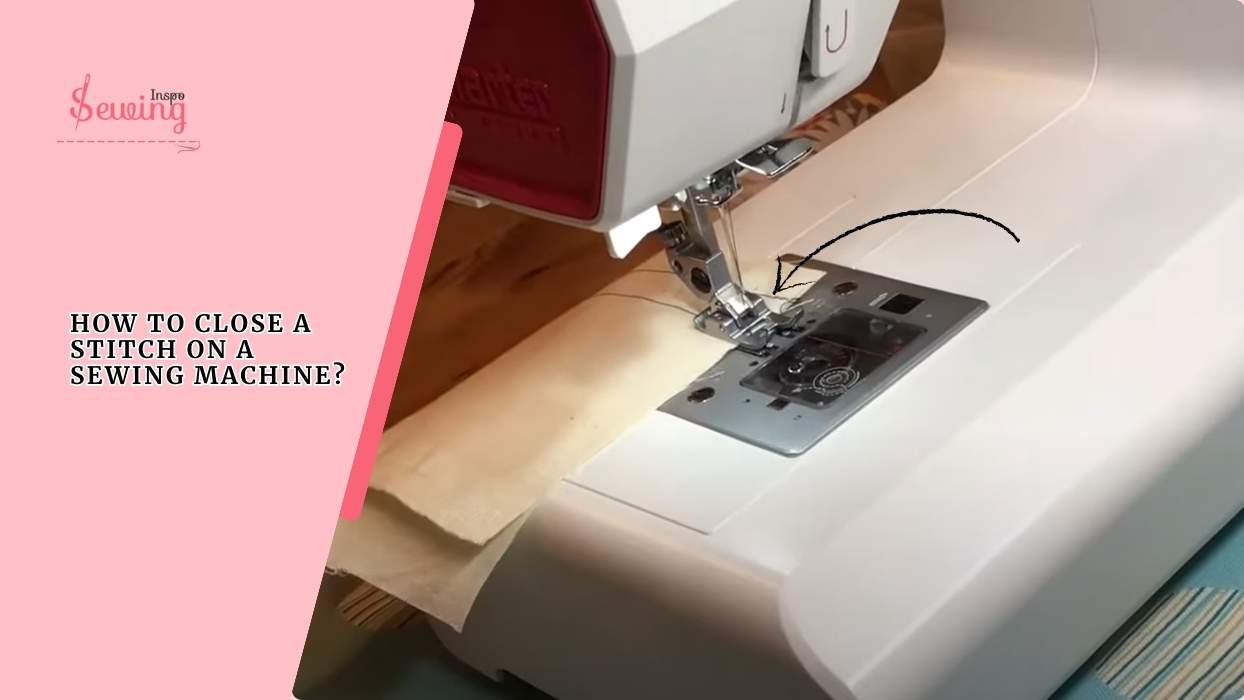
Table of Contents
How To End A Stitch Sewing Machine?
Let’s walk through each way you can close a stitch on your sewing machine that i found while working.
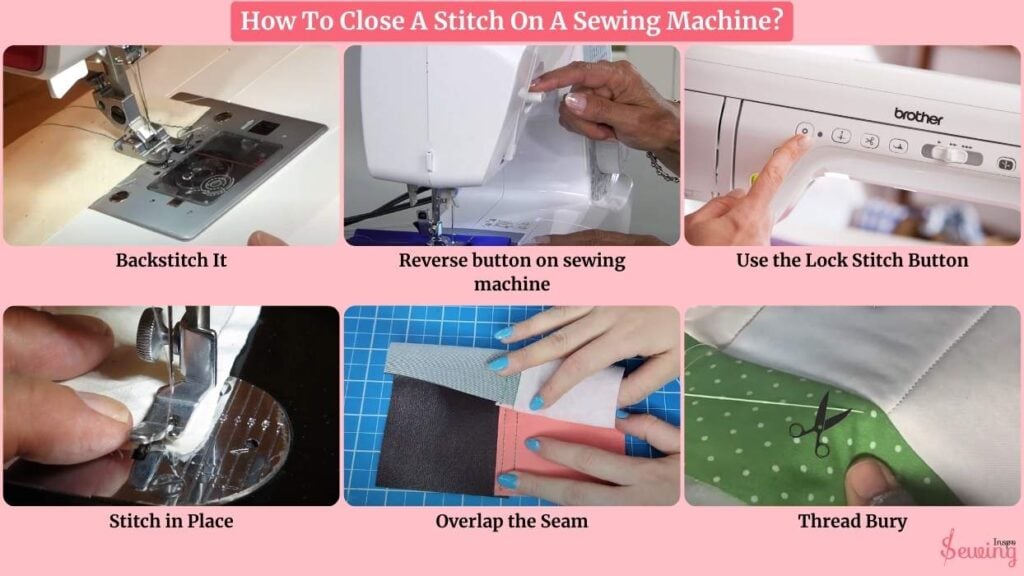
Backstitch It
Backstitch is the easiest & secure way to do it. Instead of just stopping there, here’s what you do: keep your hands steady,
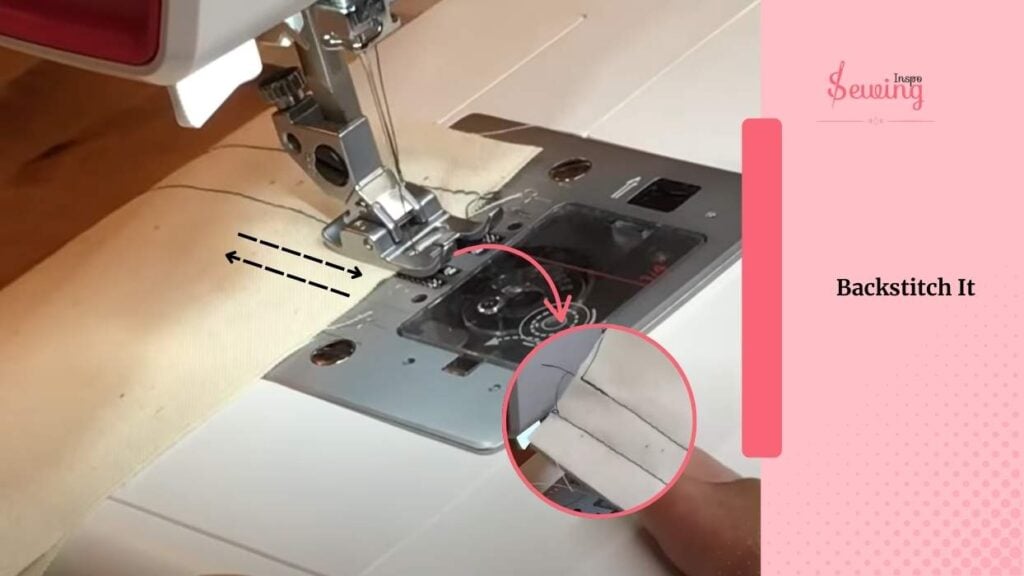
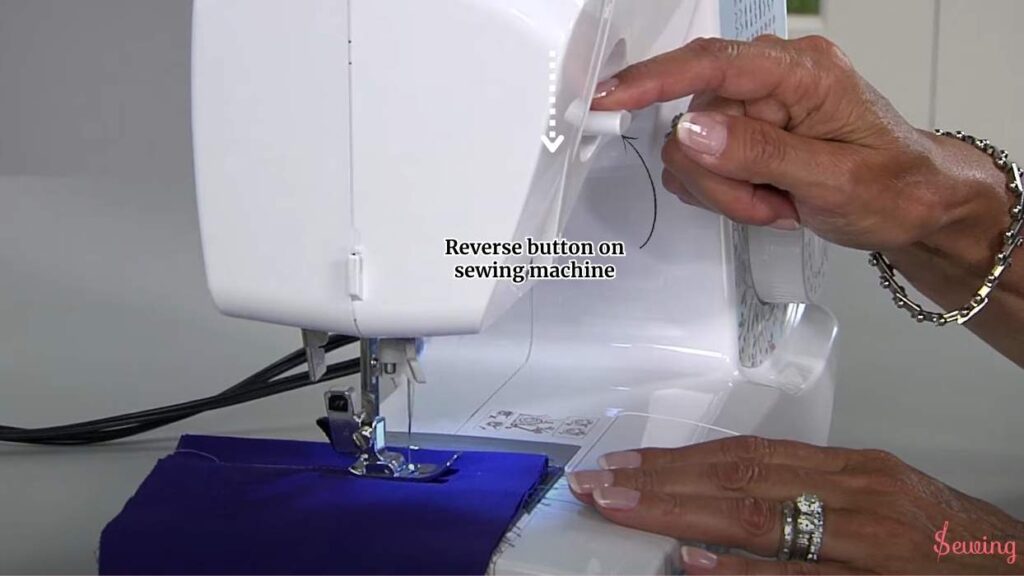
and press that Reverse button on sewing machine. It will work as stitch lock.
Now, gently sew backwards about 3 to 5 stitches.
This reinforces the end of your seam. Once you’ve done that, release the lever and sew forward again right over that same area. That double pass locks the stitches in place—no unravelling here! This is the perfect technique to close a box stitch sewing machine.
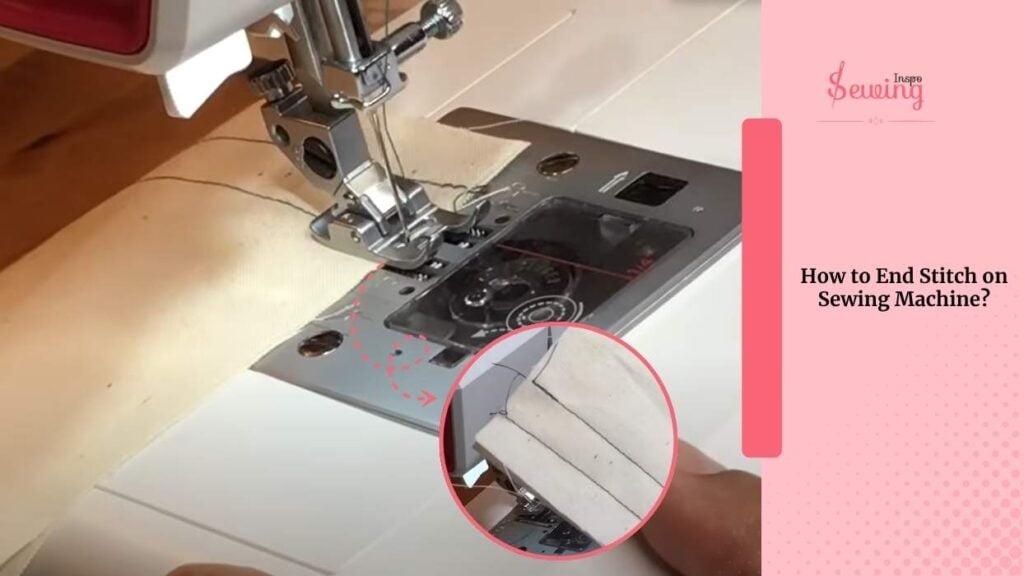
So whenever my student asked how to end stitch on sewing machine. I simply said do a backstitch. So yes, that’s how to finish a stitch on a sewing machine.
Use the Lock Stitch Button
This one’s fancy and neat. Press the lock stitch button instead of backstitching when you’re about to finish stitching. It is usually marked with a small knot or dot symbol.
Your machine will automatically make 3–5 tiny stitches in place without moving forward or backward. These “micro-stitches” act like a knot, securing the seam securing the seam perfectly. This step will reduce the chance of sewing machine stitches uneven.
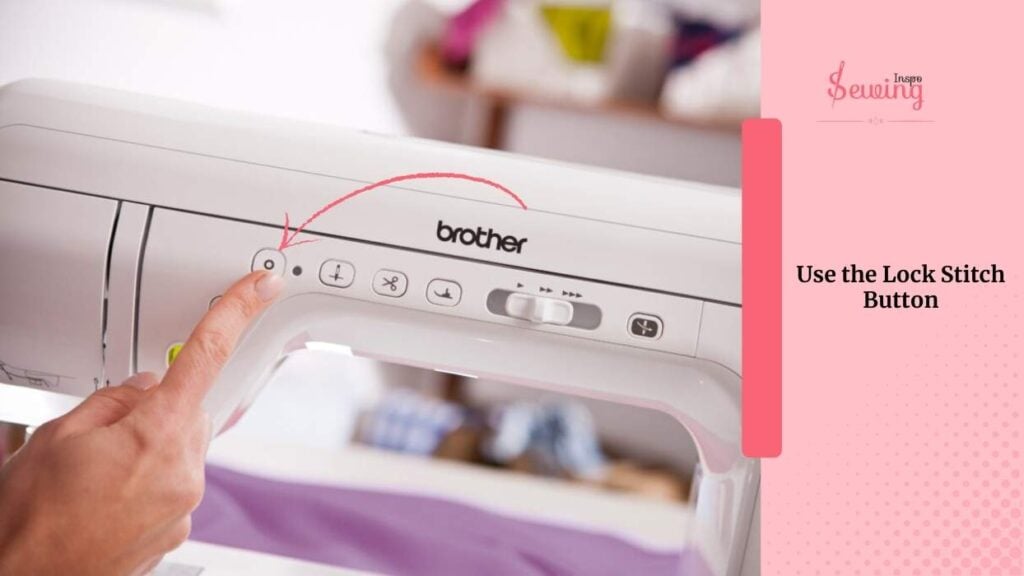
Stitch in Place
If you don’t want a bulky backstitch or your machine doesn’t have a lock stitch button, no problem—just use the “stitch-in-place” method. You can use it as an alternative to the top stitch.
When you reach the end, lightly tap the foot pedal and let the needle position move up and down twice or thrice in the same spot. There is no need to go backward or forward. This creates a tight little cluster of stitches that secures the sewing thread without being obvious.
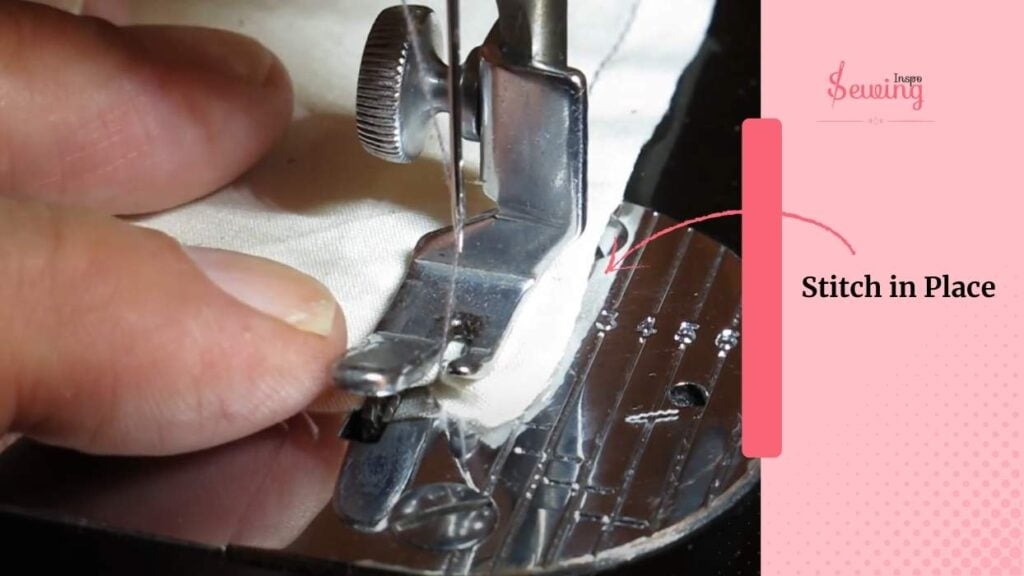
Overlap the Seam
If you’re sewing a project, the seam returns to where it started, like a hem, sleeve, or waistband. You can use the overlapping method.
Just keep sewing right over the start of your seam for about 1 inch. That overlap locks everything in without needing a separate finish. You can also use overcast stitch on sewing machine.
So when you get to the start, don’t stop—just keep going a bit further. Then lift your presser foot, trim the threads, and admire how seamless it looks. You can double thread if you want extra security.
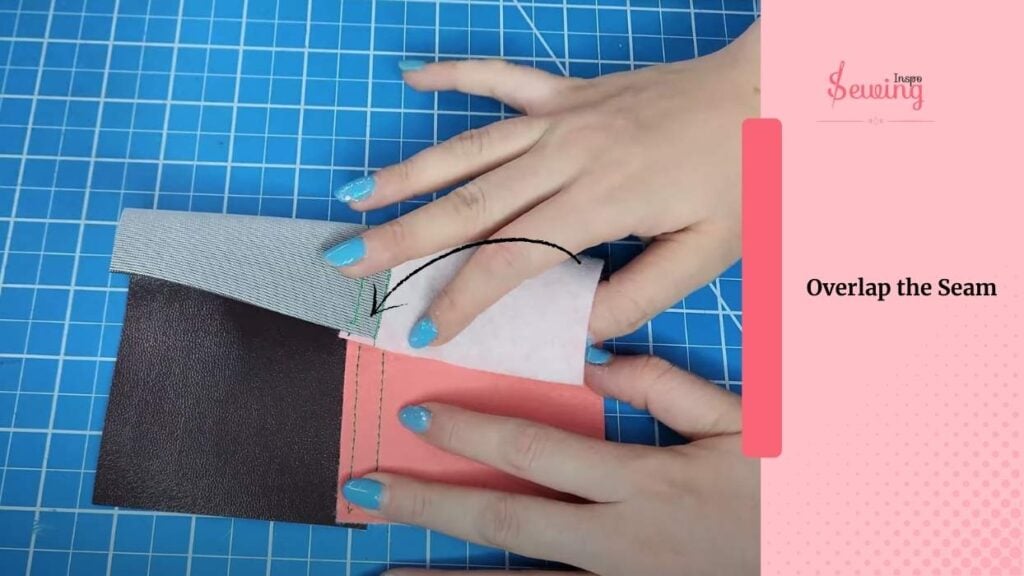
Thread Bury
I love to experiment & that’s how I find another trick thread buried. It’s easy. if you maintain the right thread tension.
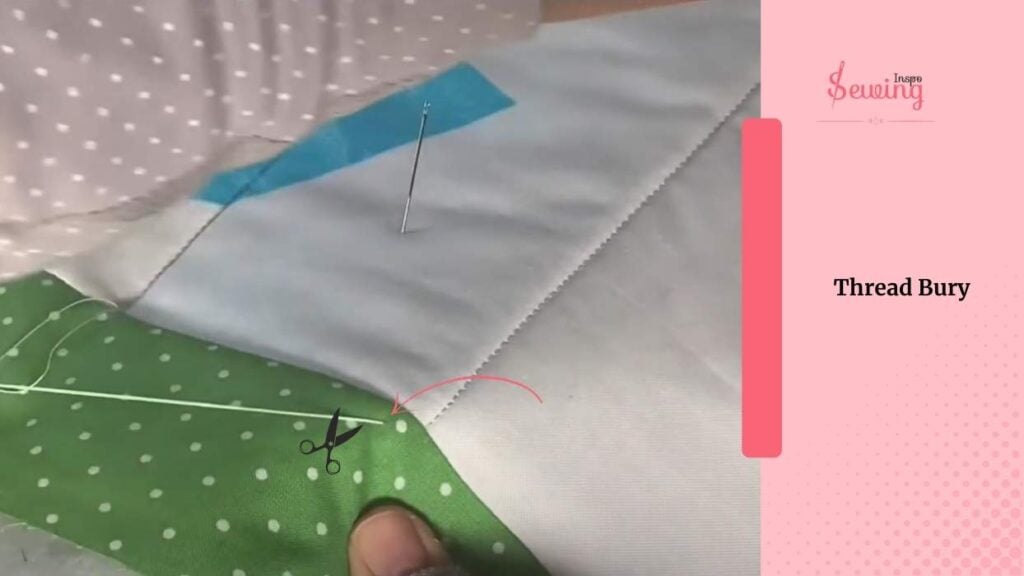
Instead of backstitching or tying off right at the edge, stop sewing just before the very end—leave about an inch unstitched. Now, lift your presser foot and gently pull your project out, leaving a few inches of thread tail. Mainly use the right stitch length.
Here’s how it works:
Thread those tails into a hand needle, then “bury” the threads into the seam—slide your needle between the fabric layers for about 1–2 inches. Put the right machine settings. Pull the needle out, gently tug the thread, and snip it off close. It won’t cause stitch jumping after this.
There you go! Whether you’re finishing off a sturdy seam or aiming for an invisible edge, you have five solid ways to close your stitch confidently. Try a few and see which one feels right for your project—and your style.
That’s how to tie off a stitch on a sewing machine.
at a glance how to end a stitch on a sewing machine!

How To Tie The End Of A Thread After Sewing?
If you wanna avoid all the hassle, then tie of the thread is for you. It’s easy. Basically, to tie the end of a thread after sewing,
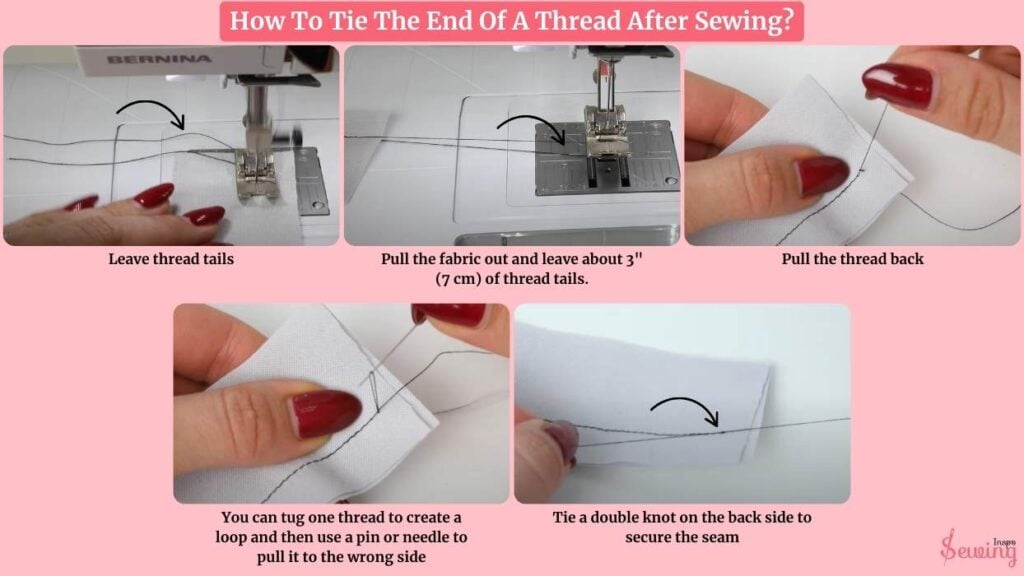
- Leave thread tails
- Pull the fabric out and leave about 3″ (7 cm) of thread tails.
- Pull the thread back
- You can tug one thread to create a loop and then use a pin or needle to pull it to the wrong side.
- Tie a double knot on the back side to secure the seam.
And just like that,
I’ve got a smooth, clean finish—no bulky knots, no loose threads, and it looks super professional. I love this trick when I want my stitching to be clean and invisible, especially on hems, visible seams, or delicate garments. That’s how to tie off a stitch on a sewing machine.
If you wanna a new trick like this, then read the How to Do Picot Stitch on a Sewing Machine article.
How To End A Stitch Sewing Machine Video Tutorial
Do You Have To Tie The Thread On A Sewing Machine
Yes, you do! Always tie your thread securely or backstitch at the start and end — it locks your stitches so they don’t unravel later. Trust me, it’s a small step that saves big headaches!
FAQ For How To Tie Off A Stitch Sewing Machine
Can I close a stitch without using the reverse button?
Absolutely. You can leave thread tails, tie them by hand, or use the thread burying trick (where you hide threads inside the seam with a needle). It’s a cleaner, knot-free option.
My machine has a “fix” button—what does it do?
The fix button sews tiny locking stitches in place so you don’t have to backstitch. It’s perfect for delicate fabrics edge where backstitching might bulk things up.
Is it okay to skip closing the stitch for short seams?
Not really. Even on short seams, stitches can unravel if they’re not secured. Always lock them down.
How to tie off a stitch sewing machine without backstitching?
If you want to tie off a stitch on a sewing machine without backstitching, just stop sewing when you reach the end, lift the needle and presser foot, and pull the fabric out gently. Leave a few inches of thread, then use your hands to tie the top and bottom threads together in a small knot, like tying your shoelaces. This keeps the stitches from coming loose and is great for delicate fabrics where backstitching might look messy.
That’s it
That’s how to close a stitch on a sewing machine.
That’s the trick I found so far.
Do you find another trick?
If yes, then feel free to share it with us.
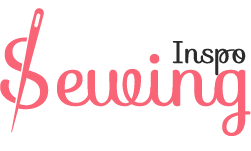
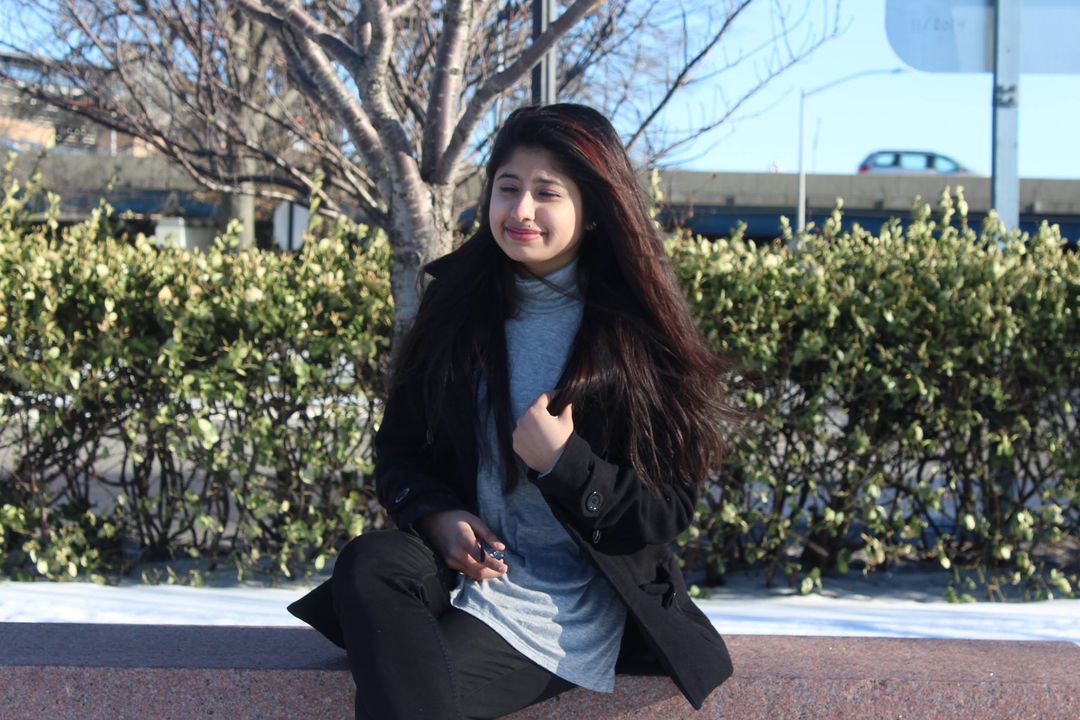



Leave a Reply